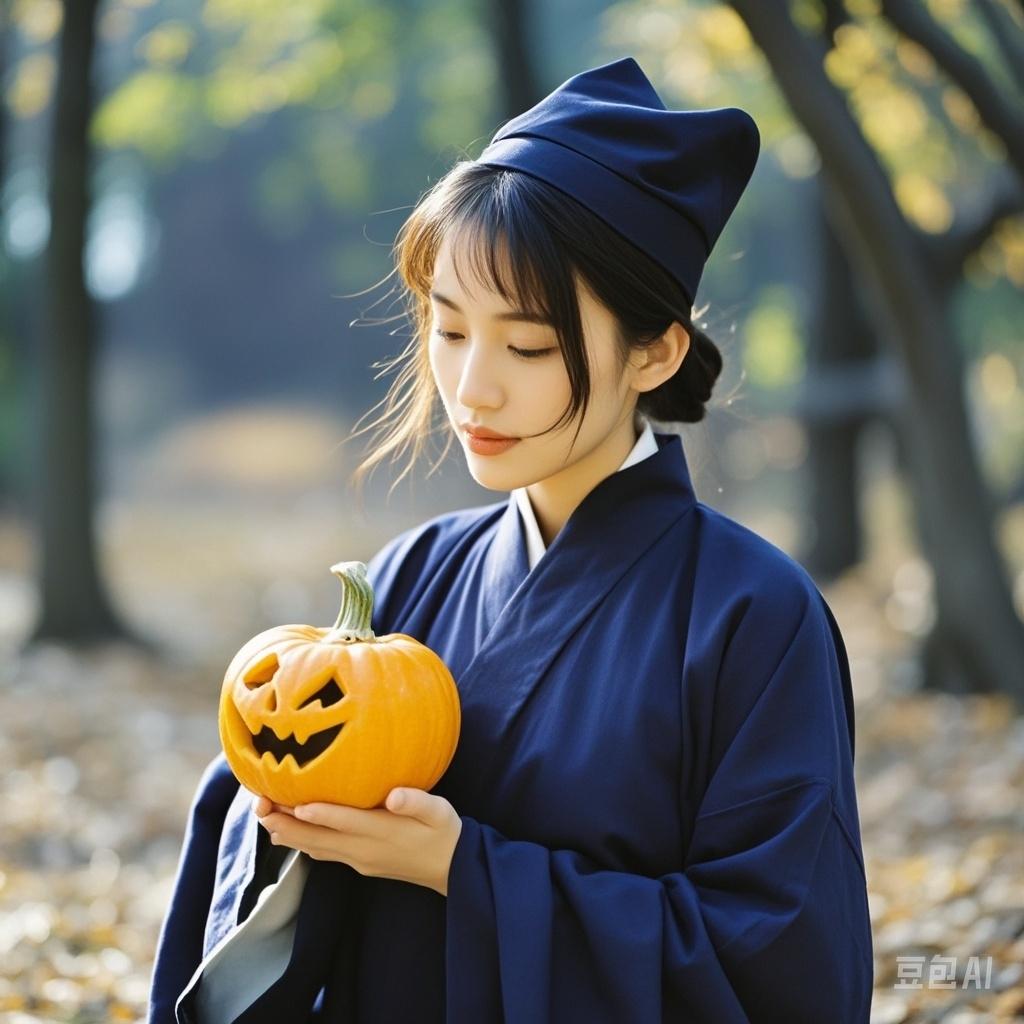In an ancient Taoist temple nestled deep within the misty mountains of China, there lived a master artisan named Liang Yu, a craftsman renowned for his unparalleled skill in working with jade. The temple, known as Qingyun Dao Guan, had been a sacred place for Taoist monks for centuries. The air within its walls was always thick with the incense of burning herbs, the chanting of ancient sutras, and the wisdom of Taoist philosophy. Yet, it was not just the monks who found solace in this temple; many travelers and spiritual seekers came from all corners of the world to visit, seeking peace and enlightenment.
Liang Yu was a man of profound depth, both in his craftsmanship and in his understanding of the Taoist way of life. He had been raised in the temple from a young age, apprenticing under the guidance of the temple’s abbot. His early years were spent in quiet study, reading Taoist scriptures and learning the principles of Yin and Yang, Wu Wei, and Ziran—concepts that would later guide his art. But it was not until the age of thirty that he began to understand how these teachings could be woven into the very fabric of his craft.
Liang Yu’s gift was his ability to shape jade—one of the most revered materials in Chinese culture—into symbols that held the essence of the universe within them. Jade, with its luminous green glow and smooth, cool texture, was seen as a stone of immortality, a symbol of purity and strength. In Taoist philosophy, jade represented the connection between the Earth and the heavens, the balance of opposing forces, and the flow of life itself.
The Spark of Inspiration
One quiet evening, after a day of deep meditation, Liang Yu found himself drawn to the temple’s ancient library. The flickering candles illuminated rows of dusty scrolls that contained the wisdom of the Taoist sages, and as he perused the texts, his eyes fell upon an ancient manuscript written by Laozi himself. It spoke of the Dao as the eternal force that flows through all things, guiding the universe in its perpetual cycle of creation, preservation, and destruction. It was in this moment that Liang Yu had a revelation.
In the Dao De Jing, Laozi wrote, "The Dao gives birth to the One; the One gives birth to the Two; the Two gives birth to the Three; and the Three gives birth to all things." This line resonated deeply with Liang Yu, and he realized that his craft, like the Dao, could bring order and harmony to the chaotic world. He could create more than just beautiful objects; he could create works that embodied the core principles of Taoism.
Inspired by this newfound understanding, Liang Yu began to experiment with designs that reflected Taoist philosophy. He wanted each piece of jade to symbolize not only beauty but also the deeper essence of life itself. His first major creation was a jade pendant carved in the shape of a Taijitu—the yin-yang symbol. This pendant, he believed, would represent the balance of opposites and the harmony of the universe.
But it was his next creation that would become his masterpiece.
The Dragon Pendant: A Symbol of Power and Protection
Liang Yu had always been captivated by the dragon—an iconic symbol in Chinese culture, embodying strength, wisdom, and authority. In Taoist cosmology, the dragon was seen as a spiritual creature that governed the forces of nature, connecting the heavens and the Earth. It was the dragon’s power that controlled the Qi (life force) and its ability to bring harmony and order to the world.
Liang Yu decided to carve a dragon-shaped jade necklace, a creation so intricate and powerful that it would embody not only the dragon's protective qualities but also the Taoist principles of balance and destiny. He envisioned a necklace with a dragon coiled around a central sphere of jade, symbolizing the union of the Heavenly Yin and Earthly Yang, with the dragon’s head raised towards the sky, representing the ascent of one’s spirit toward enlightenment.
The pendant’s scales were finely etched, and its body curled gracefully around the central sphere. The jade was a translucent green, with veins of gold running through it, creating an ethereal effect. As Liang Yu worked, he chanted the ancient Taoist mantras, calling upon the energy of the Dao to infuse the pendant with spiritual power. Days turned into weeks, and weeks into months, as he labored on this intricate piece, pouring his heart and soul into every detail.
Finally, after months of painstaking work, the Jade Dragon Necklace was completed. It was a masterpiece, a work of art that radiated a quiet, powerful energy. Liang Yu knew that the necklace was not merely a piece of jewelry—it was a vessel for the teachings of Taoism, a tool to help its wearer connect with the universe’s natural flow and gain protection and wisdom.
The Necklace’s First Owner: A Test of Fate
News of Liang Yu’s creation spread quickly throughout the region. People traveled from far and wide to see the Jade Dragon Necklace, each one captivated by its beauty and the deep symbolism embedded within it. It was said that whoever wore the necklace would be granted the protection of the dragon, as well as the strength to overcome obstacles and fulfill their destiny.
One day, a wealthy merchant named Wang Long arrived at the temple, drawn by the rumors of the mystical jade necklace. Wang Long was a man of great ambition, constantly striving to increase his wealth and status. He had heard that the Jade Dragon Necklace could bring success, and he was eager to claim it as his own.
Liang Yu, however, was not easily swayed by wealth or status. He knew that the necklace was not just a good-luck charm; it was a powerful symbol that required its wearer to be worthy. Wang Long, though powerful and influential, was not a man of virtue. He was known for his ruthless business practices, exploiting others to further his own gain.
Liang Yu agreed to sell the necklace to Wang Long, but with one condition: the merchant must promise to use the power of the necklace for the good of others, to honor the dragon’s teachings of wisdom, balance, and protection. Wang Long, blinded by his desire for wealth, scoffed at the request but agreed, thinking only of the power the necklace would bring him.
The Fall of the Unworthy
As the days passed, Wang Long wore the necklace proudly, flaunting it in front of his business associates and rivals. However, instead of bringing him good fortune, the necklace seemed to draw misfortune upon him. His once-thriving business began to falter, and he found himself plagued by a series of unfortunate events. His workers rebelled against him, his rivals sabotaged his ventures, and his wealth slowly diminished.
One night, after losing a major deal, Wang Long sat alone in his mansion, gazing at the Jade Dragon Necklace hanging around his neck. In his frustration, he turned to the necklace and demanded that it bring him the power he so desperately sought. But instead of the expected surge of strength, the dragon’s eyes seemed to glow with a disapproving light. Wang Long realized, in that moment, that he had failed to honor the true spirit of the necklace.
Desperate, he sought out Liang Yu at the temple, begging for guidance. Liang Yu listened patiently, his eyes filled with compassion but also with a quiet wisdom. “The Dragon Necklace,” he said softly, “is not a tool for selfish gain. It is a reminder of the balance between Heaven and Earth, of the unity of all things. Only those who walk the path of virtue can truly harness its power.”
It was in this moment that Wang Long understood. His ambition had led him astray, and the necklace had revealed to him the consequences of his actions. With newfound humility, Wang Long vowed to change his ways, using his wealth to help others and restore balance to his life. Over time, his fortunes began to improve—not because of the necklace, but because he had begun to live in accordance with the principles of the Dao.
The Legacy of the Jade Dragon Necklace
Years later, the Jade Dragon Necklace became a cherished heirloom, passed down from one worthy person to the next. Each wearer, after facing their own trials and challenges, learned the deep wisdom of the Dao. They understood that true power did not lie in the necklace itself, but in the harmony between their own lives and the natural flow of the universe.
Liang Yu’s craftsmanship had created not just a beautiful piece of jade; he had crafted a symbol of the Taoist path—a reminder that the true power of the dragon lay not in dominance, but in the wisdom to live in balance with the world.
And so, the Jade Dragon Necklace continued its journey, worn by those who sought not just wealth or power, but enlightenment, peace, and harmony with the Dao. It became not only a jewel of beauty, but a spiritual heirloom, a reminder of the eternal flow of the Tao, guiding all who wore it towards their true destiny.



